Drip email marketing: Why, how, and when to use it
Learn how to set up drip email campaigns and why the experts say they’re a winning strategy for businesses.

Learn how to set up drip email campaigns and why the experts say they’re a winning strategy for businesses.

Drip email marketing is the best-kept secret of business owners everywhere.
I could go on about why we love it so much, but to sum it up, did you know that drip campaigns carry open rates up to 80% higher than individual emails, with click-through rates 3x higher on average?
If you’re looking to harness those results for yourself, I’ll walk you through why, how, and when drip email campaigns work best.
Drip email marketing is a style of marketing built on an automated series of emails.
These emails are automated based on a trigger (typically an email subscriber’s activity). Triggers could include:
An email drip campaign is the actual series of emails sent out as part of your email drip marketing strategy. They might look like:
I mentioned the impressive open and click-through rates, but what else do email drip campaigns have to offer?
Now that you’ve got a handle on why drip email campaigns are helpful, let’s take a look at when you’ll want to put them to work.
The best part about drip email campaigns is that they’re versatile and can be used for any number of purposes according to what you need. Here are a few common use cases.
If a subscriber has just made a purchase or saved a product to their wishlist, set up an email recommending related or supplementary products they might enjoy.
Marketers see a 20% boost in sales revenue with personalized email campaigns, so this is an excellent moment to let your customers know that you see and understand their interests.
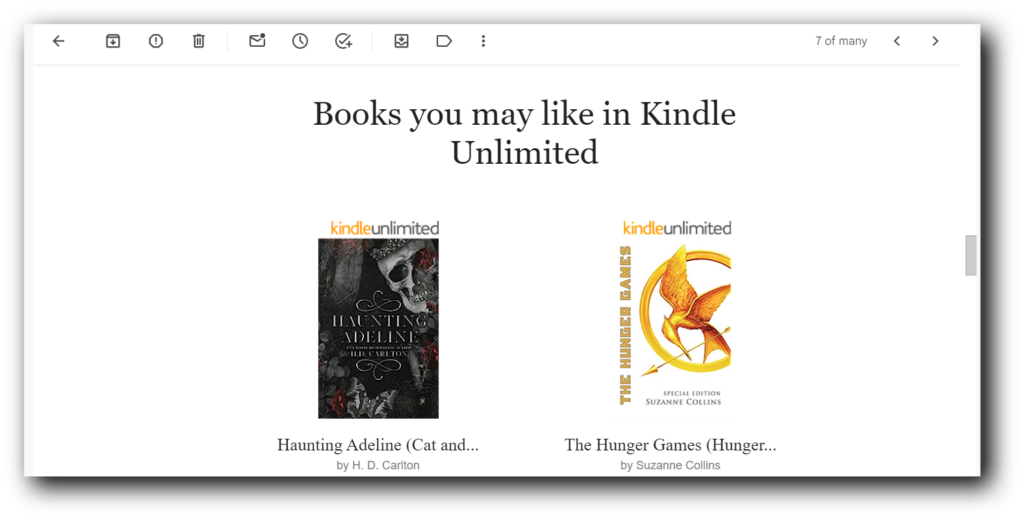
I am a voracious Kindle reader, and Amazon has a pretty good idea of what I’ll like based on my history. I get these emails pretty often, and I generally buy at least one book from each email.
Don’t wait too long to greet your new subscribers and give them a preview of what they can expect from your emails. Follow up each new addition to your subscriber list with a friendly message and an explanation of the benefits your emails have to offer.
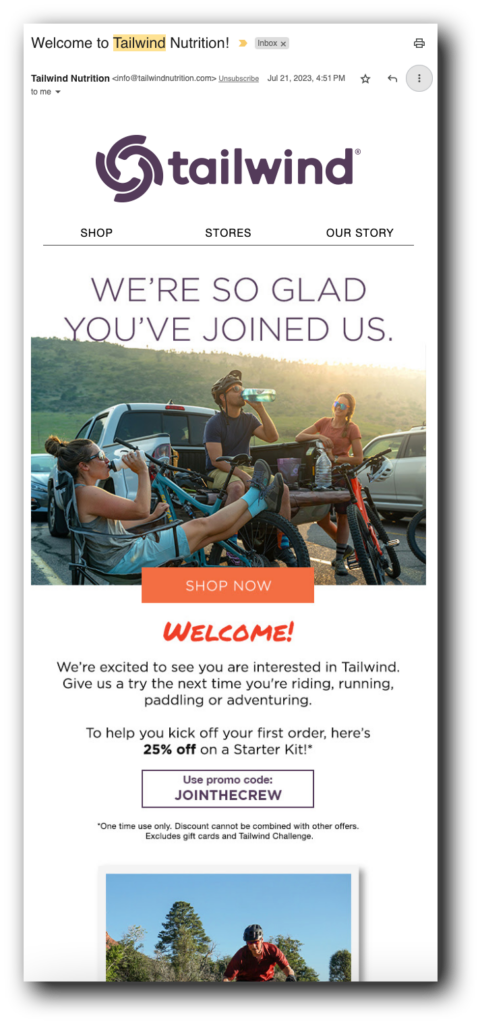
As you can see, Tailwind kicks off its subscriber relationships with an enthusiastic greeting, a peek at what readers can find on their site, and a welcome coupon to drive home the value immediately.
Drip emails are a great way to gently guide your subscribers along their journey with your brand. Tailor your emails to:
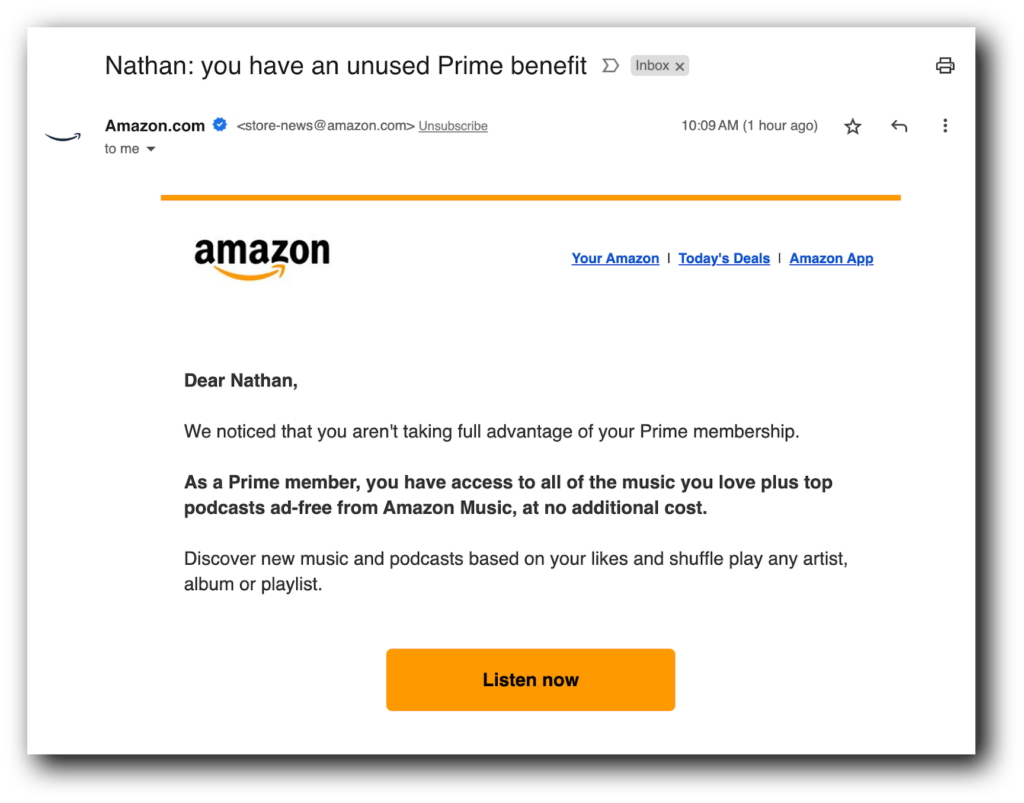
Amazon does an excellent job of finding gaps in leads’ use of its products and calling attention to them. In this case, subscribers who aren’t using Amazon’s music features get a great look at what they’re missing.
Leads sometimes lose touch—it happens. Arrange an email to send to leads or customers who have gone a certain amount of time without contact to start the conversation back up. Don’t forget to offer them access to support or answers if they need it. You may also want to offer them a perk or discount to keep their interest.
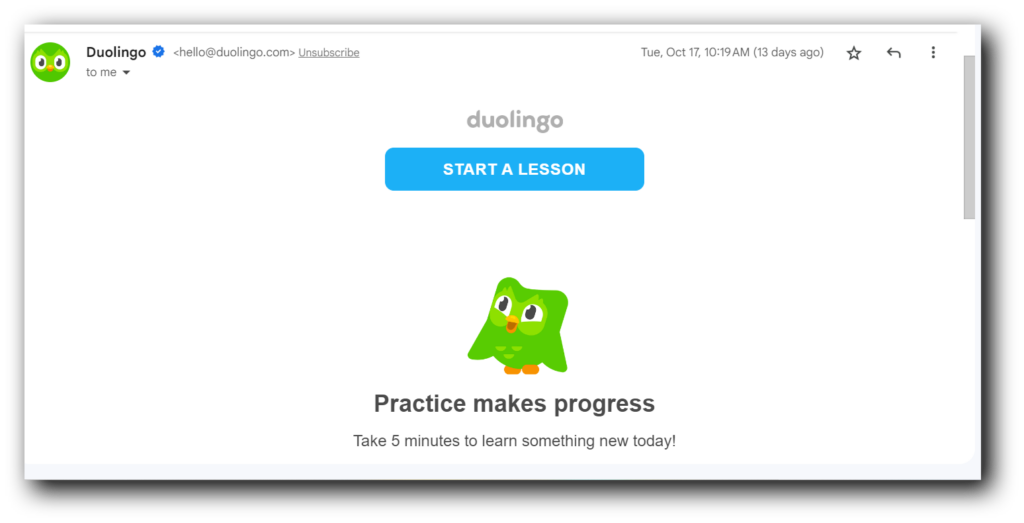
This particular email came to my inbox after I dropped off my Italian lessons for five days. I especially want to highlight the “5 minutes” bit at the bottom, as that’s what got me to restart my learning streak on the app.
If you have an event (in-person or online) coming up, you’ll want to be sure your customers are aware of and excited about it.
Set up a series of emails to send at regular intervals with:
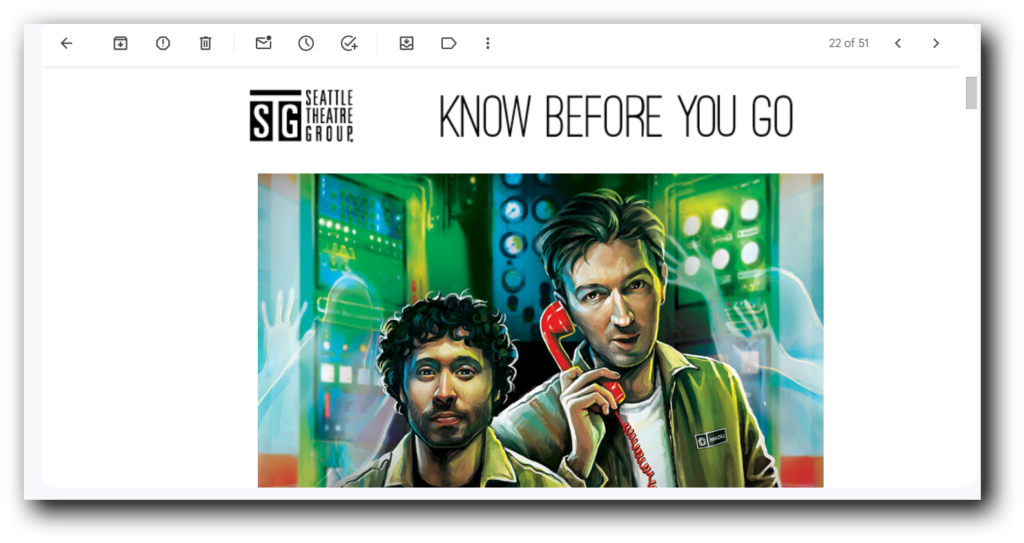
These emails I received leading up to a recent event served double duty: They gave me valuable info at a glance and kept my excitement high ahead of the big day.
Similarly, make sure your upcoming products are firmly on your customers’ radar. Start off your email series with an announcement of the product and follow it with any testimonials you have, special early-access links, and exclusive perks for your email list.
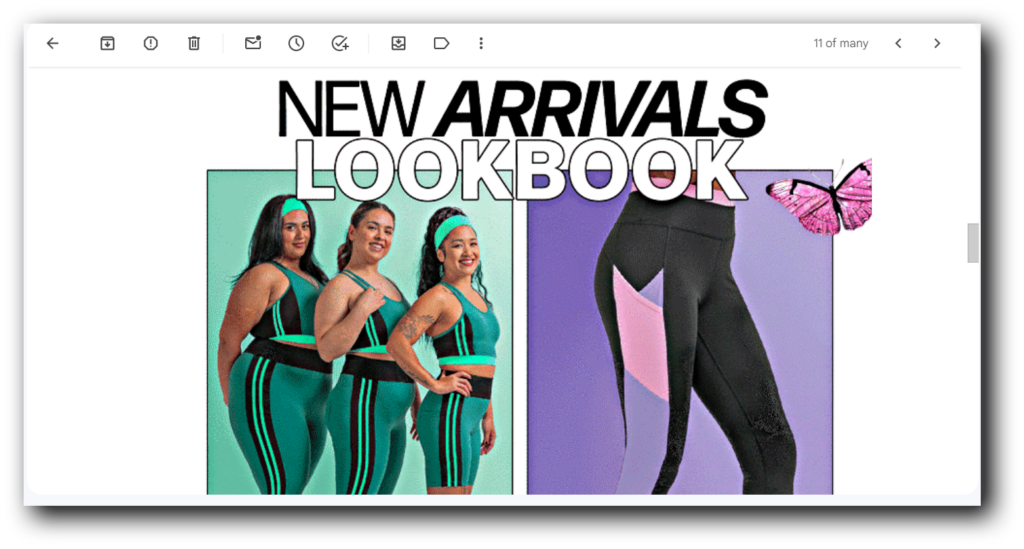
Popfit sends out these emails to announce each new launch from their brand, and they do a great job of making connections between the products in those emails to get customers to buy them all (and sadly, it works).
Your job isn’t done once customers finish checkout. Keep in touch with them after their order using:
Don’t forget to set an email to trigger in response to any shipping delays.
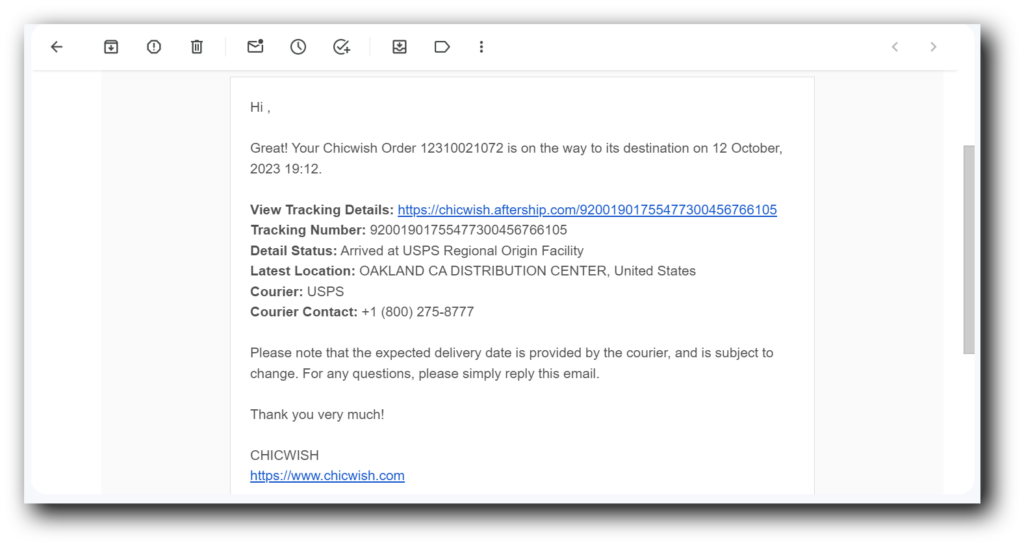
Chicwish ensures that subscribers have all the information they might need related to their order, and they send fresh emails at every step of the process.
For marketers and business owners, holidays start long before the actual day itself. You’ll want to stay ahead of the curve as each holiday approaches to ensure that your customers have time to browse and make their purchases.
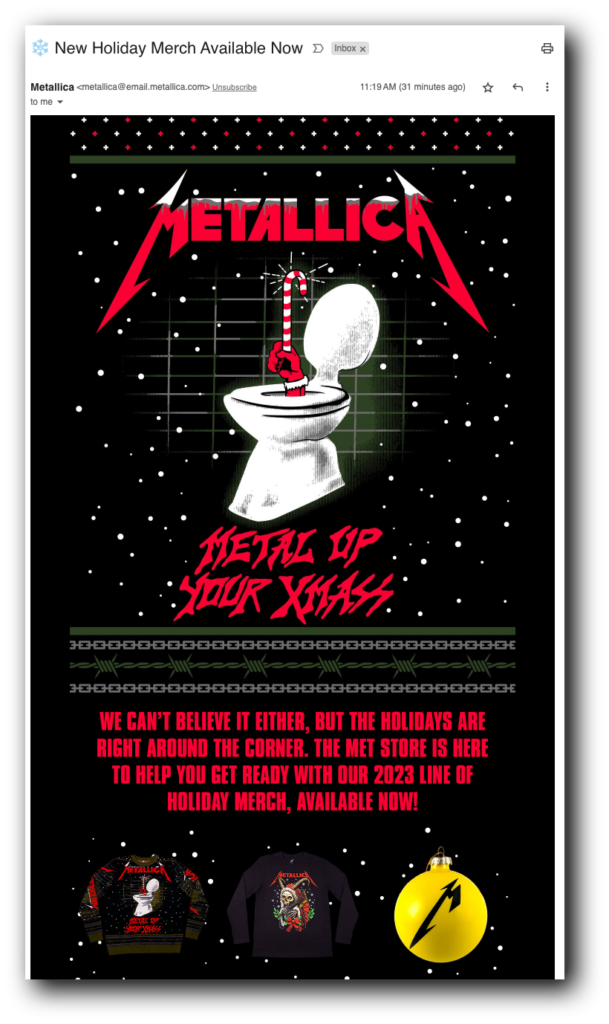
With that in mind, set a series of emails in advance of the holiday showing off any special deals you’re offering and encouraging subscribers to take advantage before the holiday rush.
Our head of content and SEO at SimpleTexting, Nathan Ellering, has been managing drip emails since 2014. Over the years, he’s built an email list of 10 million email subscribers and delivered hundreds of millions of emails.
In this case, let’s map out a welcome email sequence for new subscribers.
In reaching out to welcome your subscribers, what are you hoping to accomplish? Do you want more visits to your website, coupon redemptions, or sales?
Getting clear on your goal before you set up your drip email campaign will help keep it cohesive and effective.
Here’s Nathan’s advice on deciding your email quantity for your drip campaign:
“I’ve found that drip email campaigns tend to perform best with fewer emails in them. You’ll almost always find the first email is the best performer for deliveries, opens, and clicks and the last is the lowest performer.
I’ve set up drips with 25 emails in them that spanned the course of 12 months. The later ones were essentially duds. When my team and I researched this further, we discovered drip email campaigns with three to four emails in them tended to perform the best. We set these up for two emails per week, so the entire drip campaign was completed over a two-week period.
Including more than four emails just didn’t work for the audience at CoSchedule. There was a fairly consistent trend with the fifth email performance being at least 30% lower than the one before it, and every email after that was even worse.
I’d recommend setting up an email drip campaign with no more than four emails. Depending on your audience, send out one or two emails per week. From there, measure the performance and adjust accordingly.
📖 Recommended reading: 10 exceptional email newsletter examples
Now it’s time to decide what to say. Keep it simple and in line with your business’s tone, but be sure to include:
Once you have your sequence planned and written out, set them up in your favorite email software to send based on subscriber actions like the ones I covered here.
Pro tip: You can often find software integrations just for your industry with providers like MailChimp (or SimpleTexting!). This will make it easier to use customer data to inform your email campaigns.
As Nathan said, checking out campaign performance after you hit “send” is a vital part of the process.
If you’re getting excellent open rates, note what you did right in your subject line. If responses and click-through rates look low, try a different format in future campaigns. This will help you improve your drip email campaigns every time you send one.
Last but definitely not least, there are a few key best practices you’ll need to keep in mind when setting up and sending drip email campaigns.
You may still have questions about email drip campaigns. If you do, you’re not alone. Here are a few of the most common questions on the subject.
You can set up a drip email campaign by automating each message to send when your subscribers take a specific action. Most email providers support automation, but specific setup steps will depend on which one you use.
Yes, email drip campaigns are effective. They consistently result in higher open and click-through rates than individual emails.
Our resident email expert finds that four emails is the perfect number for a drip campaign. Any more, and you risk overwhelming your subscribers and seeing a drop in performance.
Lily is a content marketing specialist at SimpleTexting. She specializes in making helpful, entertaining video content and writing blogs that help businesses take advantage of all that texting has to offer. When she’s not writing or making TikToks, you can find Lily at roller derby practice or in a yoga studio in the Seattle area.
More Posts from Lily NortonWant to earn repeat business all year for your health and wellness subscription business? Learn how drip campaigns can help keep your customers coming back for more.
ReadWe surveyed over 3,000 respondents from across the US to rate their coffee obsession. Find out which states need caffeine the most!
ReadStart a text marketing campaign or have a 1-on-1 conversation today. It's risk free. Sign up for a free 14-day trial today to see SimpleTexting in action.
No credit card required